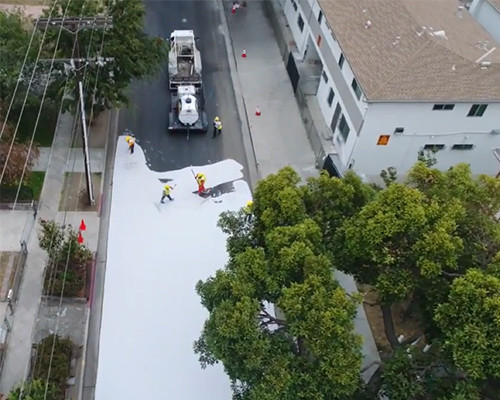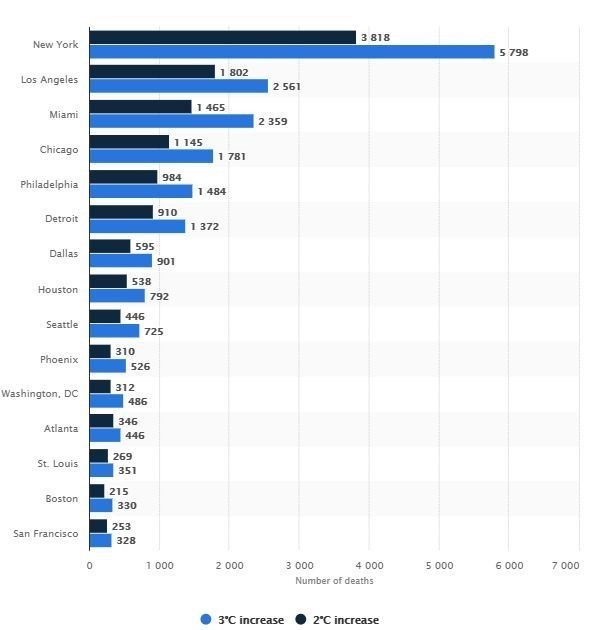Los Angeles is using these innovations to tackle urban heat and cool the city down
The Californian city of Los Angeles aims to reduce temperatures by 1.6°C by 2050, and it has come up with a range of innovative ways to do it.
L
os Angeles has endured record high temperatures of over 35°C this summer. Scientists say that if nothing is done, LA will be as hot as La Paz on the southern tip of Mexico’s Baja California peninsula within 60 years.
But the city is fighting back with new approaches aimed at reducing temperatures by 1.6°C by 2050.
Mayor Eric Garcetti has launched a New Green Deal and established the Los Angeles Climate Emergency Commission, bringing together neighbourhood representatives with climate scientists to recommend long-term actions to fight the heat.
On the agenda is whitewashing streets, installing reflective roads and planting thousands more trees.
Action plan
Tarmac and concrete surfaces in cities absorb and radiate heat. So the LA city authorities have begun painting the roads with a new white surface to reflect back the sun’s rays. Experts say this will reduce temperatures by 5.5°C in the immediate area.

Image: GuardTop
Trees not only provide shade, they also absorb CO2, ultimately helping to prevent further warming. The city plans to plant 90,000 new trees over the next two years and volunteers are training as city foresters to plant even more in the most heat-affected areas.
A lack of shade at bus stops has discouraged people from ditching their cars in favour of public transport, so the Mayor’s plan calls for the simple solution of building shelters.
Angelenos are also being urged to instal cool roofs on their homes to reflect back heat and reduce temperatures inside, avoiding the need for so much energy-intensive air conditioning.
Heat highlights inequality
But not everyone can afford these sorts of measures and the heat is unevenly distributed.
And that means extreme heat has also become a political issue. The mayor says tackling climate change is about inclusion and ending inequality.
Less affluent areas like West Adams routinely hit 35°C, while upmarket beachside Santa Monica has an average summer high of just 21°C. Data shows that African Americans living in LA are twice as likely to die in heat waves than their neighbours.
Fighting urban heat is also a priority for many other US cities.
Scientists at the University of Maryland forecast that if global emissions continue to rise at current rates then by 2080 American cities will be hotter than other places in the western hemisphere north of the equator.
Cities in the northeast will feel more like the humid subtropical climates of parts of the Midwest or southeastern US today, warmer and wetter in all seasons. Washington DC will feel more like northern Mississippi, while San Francisco’s climate will resemble that of Los Angeles in the past.
Projected number of deaths caused by 1-in-30-year extreme heat events in the United States as of 2019

Washington DC has issued a climate resilience plan which calls for all the city’s buildings to be upgraded to cope with rising heat and flooding threats by 2050. If buildings cannot be modified, they may have to be demolished.
Washington is planting more trees and adding storm drains, porous sidewalks and vegetation to combat flooding. All new buildings will have to comply with the new standards by the end of the next decade.
Dallas is also planting trees to tackle its urban heat islands, where temperatures can be 9°C higher than surrounding areas. A recent report identified concrete buildings, highways and parking lots as sources of additional heat on hot days. And the city council recently passed its first climate action resolution calling for a detailed plan.
For the vulnerable, heat is a matter of life or death. This summer’s heatwaves underscore the need for action in a warming future.
The ideas presented in this article aim to inspire adaptation action – they are the views of the author and do not necessarily reflect those of the Global Center on Adaptation.